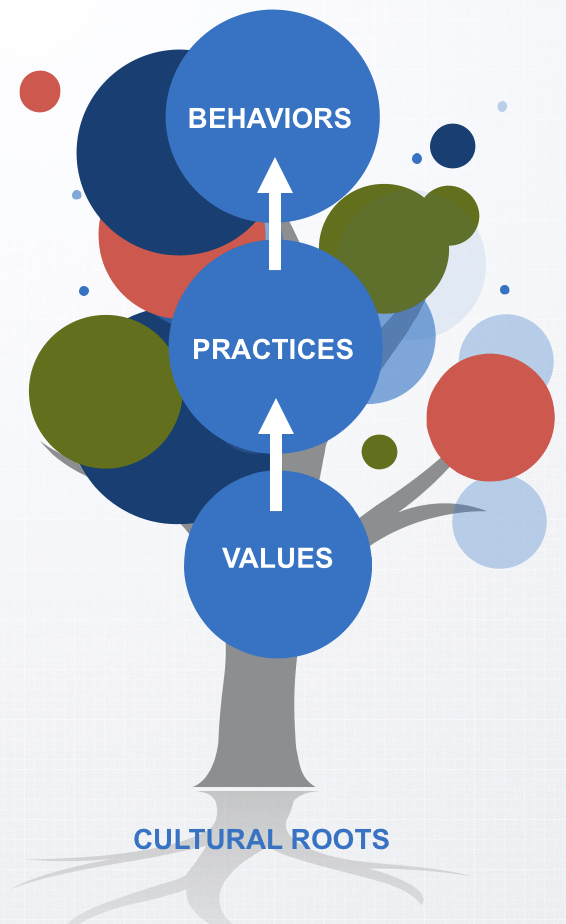Culture Counts: Where Diversity Grows or Withers
As we’ve seen through multiple studies and in many articles, diversity training alone isn’t enough. What happens outside of a training module, a workshop, or a dialogue about diversity, equity, and inclusion? What are managers imparting to their team members about effective collaboration and respect for colleagues? Do leaders walk the talk?
In order to know how to best move forward with advancing diversity efforts, you’ll need to assess your organization’s culture.

Culture is that intangible essence of an organization that you can’t really define, right? Wrong. Like a tree, it may grow organically. But you can shape your company culture by how you care for it, nurture it, and direct it to grow.
Culture encompasses behaviors, practices, and values, along with your roots, the DNA of an organization from its birth. It can be defined in large ways and small, like whether a company defaults to email or meeting-based collaborations or how seriously teams take an annual Halloween costume contest.
In daily interactions, we can observe cultural “tells.” If someone in a team meeting accuses a colleague of acting like a girl and the line gets a laugh, you’re likely to hear more of that language casually thrown around. But in a diversity-inclusive culture, a colleague could let them know that a comment about “acting like a girl” isn’t appropriate because it’s demeaning to women. When feedback like this is accepted and applied, eventually there is less need for those teachable moments. Team members who can’t get on board with what is okay and not okay within your organization may get weeded out, as Delta Airlines has shown with employee separations that made headlines this year.
For organizations like Delta, the commitment to anti-racism and inclusion applies not only to employees but to partners and customers, as well. Within that culture, hate symbols like swastikas and the Confederate flag are unacceptable, whether on an employee office wall or on a passenger’s t-shirt.
Those are examples of overt bias. But what about unconscious bias within company culture? During one search engagement, an executive said that he would approve interviewing diverse candidates for a key role only if he wouldn’t be sacrificing quality. Within that statement, he implied that demographically diverse people aren’t of excellence. Would you be surprised to know that the workforce of this company was generally homogenous?
For organizations that have done things as they’ve always done them and don’t believe D&I efforts are necessary, here are some statistics to note.
- By 2045, there will be no ethnic majority in the United States.
- 36% of today’s workforce is multi-cultural (Asian, African American, Hispanic/Latino)
- Four generations are currently active within today’s workforce, from Boomers to Next Gen employees
Organizational culture must evolve to not only embrace demographic and behavioral diversity but also leverage it to create dynamic teams that succeed because of the range of perspectives within them. With improved collaboration and innovation, working through diversity tension, companies can expect better business outcomes and higher employee engagement and retention.
How do you begin shifting culture to capitalize on diversity rather than marginalizing it? Start here:
- Conduct a cultural assessment to understand where your culture is today.
- Create an action plan for change, with leaders understanding what behaviors and practices need to change.
- Begin to model new behaviors. Reward positive interactions and behaviors while addressing unacceptable ones.
In a culture that values all voices, the leader who said that he would not want to sacrifice quality by considering diverse candidates could be asked to explain his meaning. In a culture of candor, honesty and transparency, a colleague or supervisor could say, “This is what that statement implies…” A two-way conversation with each party listening and speaking can result in a path forward that is productive and helpful. Working through these issues is necessary for growth in cultures that are preparing to engage our current and future demographically and behaviorally diverse workforce.
Do all your employees feel supported as they strive to meet business goals? Let’s talk.



